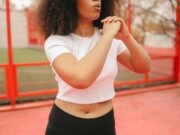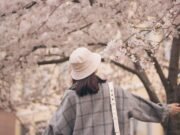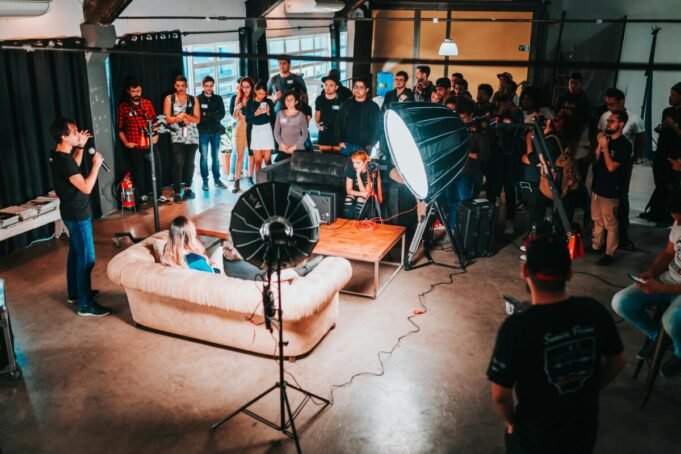Streetwear culture has evolved dramatically over the past few decades, transforming from an obscure subculture to a major force in the fashion industry. While streetwear has its roots in urban youth movements and skating scenes, fashion events have played a pivotal role in elevating streetwear to the mainstream and shaping its growth. From trade shows to runway presentations, fashion events provide a platform for streetwear brands to gain exposure and influence wider style trends. This article explores the impact of fashion events on streetwear culture, tracing how these platforms have bridged streetwear with high fashion, sparked collaborations, and forecasted trends.
Elevating Streetwear to High Fashion
In the past, a huge divide existed between streetwear and high fashion. Streetwear was viewed as casual wear for youths, while high fashion represented elite designer clothing. However, major fashion events have helped break down the barriers between these two worlds. Leading events like Paris Fashion Week and Pitti Uomo now embrace streetwear brands, providing a high-profile platform for their collections. This marks a major shift, elevating street style to haute couture status.
Paris Fashion Week in particular has played a key role, with influential streetwear labels like Vetements and Off-White making runway debuts. Demna Gvasalia of Vetements brought hoodies, oversized suits, and streetwise styling to the Paris catwalks. Virgil Abloh’s Off-White collections fuse street art, urban fabrics and silhouettes with high fashion tailoring. By showcasing these avant-garde streetwear collections alongside elite designer brands, Paris Fashion Week has helped legitimize streetwear. This blurring of boundaries has shaped the modern fashion landscape.
Meanwhile, Italian event Pitti Uomo has become a streetwear hub. Emerging labels like Palm Angels, Enfants Riches Déprimés and Y/Project have all presented collections at Pitti Uomo. This Florence-based event has connected streetwear with sartorial tailoring, bringing an edgy twist to menswear. With major fashion weeks embracing streetwear, these urban styles now share the spotlight with established high fashion brands.
Providing a Platform for Streetwear Designers
Beyond the fashion capitals, a range of events provide platforms for up-and-coming streetwear designers. Trade shows like ComplexCon, Agenda and Liberty Fairs give exposure to new talent and smaller brands. Many streetwear designers gain their first break at such events, using them as springboards for wider success.
For instance, ComplexCon has helped launch emerging labels like Rhude and Fear of God into the fashion stratosphere. Started by founder Rhuigi Villaseñor in his parents’ garage, Rhude made its trade show debut at ComplexCon 2015. The response was so positive that Rhude’s first production run sold out within hours. This propelled the label into the spotlight, leading to collaborations with major retailers.
Similarly, Fear of God founder Jerry Lorenzo credits ComplexCon with providing a crucial platform for the brand. As Lorenzo stated: “ComplexCon allowed us to tell our story to a captive audience.” This exposure helped showcase Fear of God’s luxury streetwear to a receptive crowd, establishing its cult following. Lorenzo has since collaborated with Justin Bieber and Adidas.
By providing visibility for up-and-coming streetwear labels, fashion trade events act as incubators for new talent. They give brands vital exposure to buyers, press and consumers, helping launch successful streetwear ventures.
Bridging the Gap Between Streetwear and Luxury
The blending of streetwear and luxury fashion is another key trend catalyzed by major events. By facilitating collaborations between streetwear brands and elite designers, fashion weeks have led to boundary-pushing creations.
A pioneer of these high-low collaborations is Japanese streetwear label A Bathing Ape (BAPE). In 2002, BAPE made waves at Paris Fashion Week through a groundbreaking partnership with French couture house Christian Dior. The co-designed collection fused BAPE’s bold graphics and street silhouettes with Dior’s elegant finishes. This bridged streetwear aesthetics with luxury fashion in an unprecedented way.
New York Fashion Week has also sparked creative streetwear collaborations. YEEZY’s Season 1 collection debuted at NYFW, blending Kanye West’s urban aesthetic with high fashion. The presentation generated buzz by integrating hoodies, oversized jackets and boots into a minimalist runway concept. By blending hip hop attitude with elegant styling, the show encapsulated the modern merging of streetwear and luxury fashion.
From Vetements teaming up with brands like Levi’s and Reebok, to Supreme’s collaborations with Louis Vuitton, fashion events continue to foster innovative partnerships. These events provide an experimental playground for streetwear brands to connect with the world of luxury and haute couture.
Trendsetting and Trendspotting
Fashion events act as vital trendsetting hubs that influence street style evolution. Runway shows, in particular, showcase bold new styling directions that filter down to the streets. For instance, Demna Gvasalia’s oversized silhouettes and deconstructed tailoring at Vetements inspired slouchy, anti-fit looks. Meanwhile, Virgil Abloh’s hybridized high-low styling in Off-White collections set trends mixing athleisure and formalwear.
Beyond catwalk shows, trade events also offer trendspotting opportunities. By gathering hundreds of brands and designers, trade shows act as barometers of emerging streetwear trends. For example, Agenda is known for spotlighting new developments like techwear and avant-garde graphics months before they hit the mainstream. Streetwear fans and buyers attend these events to identify the next big things in urban fashion.
Through this interplay, fashion events participate in a feedback loop that accelerates streetwear innovation. Trends first spotted at trade shows filter onto catwalks, which then broadcast these styles globally, feeding them back to the streets. This cycle rapidly propagates new streetwear aesthetics and movements.
Streetwear as a Trend Forecast
While fashion events spotlight the latest streetwear trends, they also reflect the broader influence street style exerts over the industry. Increasingly, streetwear itself acts as a trend forecast, dictating the themes percolating through high fashion.
Runway collections across all levels of fashion have drawn inspiration from streetwear codes. For example, urban staples like hoodies, sneakers, tracksuits and caps have infiltrated high fashion runways. Meanwhile, street art motifs, bold logos and graffiti prints have been embraced by luxury brands. This trickle-up effect shows how streetwear’s rebellious energy shapes wider fashion.
By showcasing these street-born styles, fashion events propagate streetwear’s grip on the industry. For instance, during the late 2010s “athleisure” boom, fashion weeks spotlighted sporty aesthetics from labels like YEEZY, Vetements and Balenciaga. This mirrored and accelerated the casualization of fashion spearheaded by streetwear. From catwalks to showrooms, fashion events amplify streetwear’s wider cultural influence.
The Evolution of Streetwear Through Fashion Events
Looking back over time, fashion events have been instrumental in transitioning streetwear from a fringe subculture into a fashion powerhouse.
In the 1980s and 90s, streetwear was anchored around brands like Stussy and Supreme that emerged from youth subcultures. At this time, fashion events largely excluded streetwear from the spotlight. However, landmark events like the Magic Streetwear trade show provided early platforms for street style to gain more mainstream visibility.
The 2000s saw pioneers like BAPE and Droors begin blurring streetwear with high fashion. Meanwhile, events like Agenda started gathering steam, shining a light on streetwear brands and culture. This built momentum leading into the 2010s, as fashion weeks opened their doors to streetwear.
Today, streetwear possesses enormous influence over the fashion industry. Fashion events that once shunned street brands now clamor to showcase them. This trajectory shows how fashion events have been crucial in shaping streetwear’s growth and identity over time. Their endorsement has allowed street style to permeate the mainstream.
Case Studies of Fashion Events and Streetwear
Several landmark fashion events have left an indelible mark on streetwear history:
Supreme’s Runway Shows
Streetwear label Supreme made waves by presenting full runway shows at Paris Fashion Week in 2020 and 2022. These highly theatrical events featured celebrity models and paid homage to Supreme’s roots and irreverent spirit. By playfully satirizing high fashion, Supreme’s shows celebrated streetwear’s counterculture ethos. Their impact affirmed streetwear’s ascent in the fashion world.
ComplexCon
Launched in 2015, ComplexCon has become a festival-like mecca for streetwear fans. Its convention halls and live events provide a vibrant platform for brands like The Hundreds, Kith and RTFKT to unveil new products. The event has propelled many labels from obscurity to mainstream success.
Agenda Show
Dating back to 2003, Agenda has championed youth-oriented streetwear brands. Its showcases of graphics-heavy labels, capsule collections and limited-edition collaborations make it a hypebeast hotspot. Agenda provides a pulse on what’s brewing in street culture.
Demna’s Appointment at Balenciaga
Designer Demna Gvasalia has straddled the realms of streetwear and luxury fashion. His appointment as Creative Director of Balenciaga in 2015 brought a streetwise edge to the elite brand. Demna’s Balenciaga shows at Paris Fashion Week have blended anti-fashion attitude with technical innovation. This exemplifies streetwear’s avant-garde influence at the highest levels.
Conclusion
Fashion events have been crucial platforms for streetwear to gain recognition and influence wider style trends. By endorsing streetwear brands and spotlighting urban aesthetics, these events have bridged street style with high fashion. They have also provided vital visibility for emerging labels, accelerating streetwear’s evolution. Going forward, fashion events and streetwear culture will continue to share a symbiotic relationship. As streetwear cements its status in the fashion industry, events will keep playing a key role in shaping its future. The cycle of trendsetting, collaborations and experimentation between these two realms will carry on advancing street style into new territories.




































